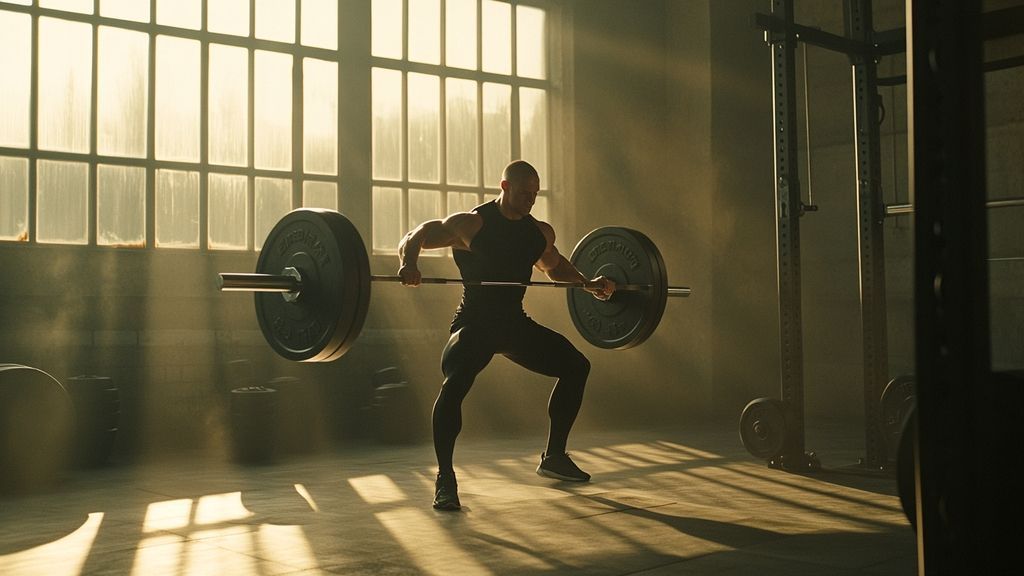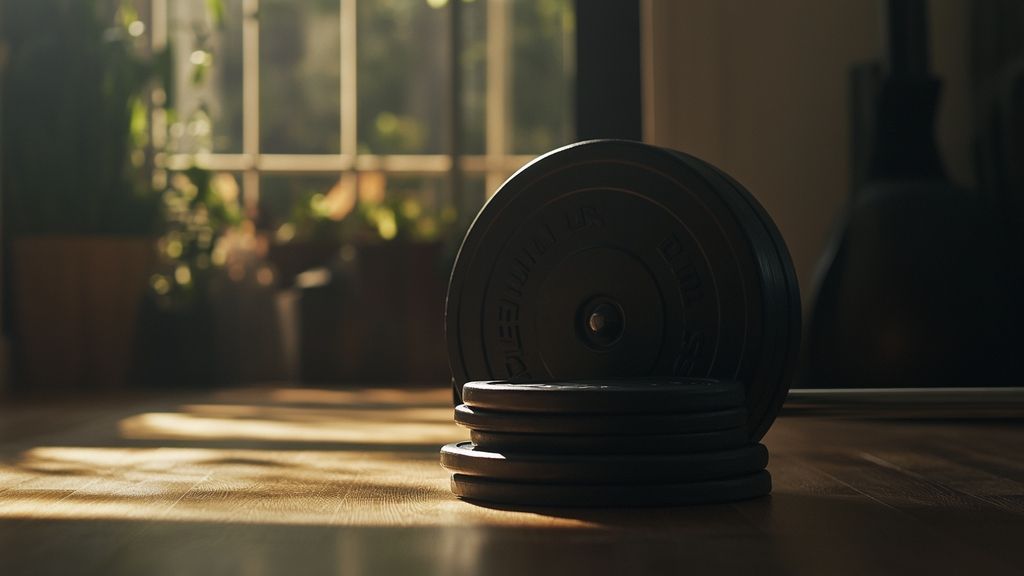CrossFit has emerged as a potent fitness regime that not only enhances physical strength but also cultivates a sense of community. With its roots in high-intensity training and functional movements, it appeals to a diverse audience, including those new to fitness. Understanding the basic movements in CrossFit is essential for anyone looking to dive into this exhilarating world. This guide will provide a thorough exploration of the fundamental movements in CrossFit, emphasizing their importance, execution, and benefits, ensuring beginners can start their journey with confidence.
Training in CrossFit revolves around various exercises aimed at improving overall physical performance, which includes strength, endurance, and flexibility. By mastering these basic movements, individuals can establish a solid foundation that allows for progression and minimizes the risk of injury. As you embark on this journey, this guide will not only detail the movements but also provide essential tips and resources to optimize your training experience.
Understanding CrossFit Movements
The foundation of CrossFit consists of functional movements that resemble daily activities, making them relevant and accessible. These exercises can be broadly categorized into several families, such as squats, presses, lifts, and aerobic movements, among others. Each movement has specific goals and involves different muscle groups, contributing to a comprehensive workout.
Functional movements are designed to improve overall strength, agility, and endurance. The beauty of CrossFit lies in its adaptability; workouts can be scaled to fit any individual’s fitness level, making it inclusive. This includes beginners who might feel daunted by the idea of joining CrossFit classes populated by seasoned athletes.
Core Strength and Conditioning
At the heart of CrossFit lies a focus on core strength and conditioning. Movements are designed to engage the core, which is crucial for stability and preventing injury. Core exercises are not limited to traditional crunches; they encompass functional movements such as squats, deadlifts, and kettlebell swings.
By prioritizing these exercises, CrossFit helps to enhance athletic performance and resilience against injury. Furthermore, a strong core supports proper posture and alignment, which are essential for the biomechanics of all physical activity.
The Squat Series

The squat series is fundamental in CrossFit, targeting the lower body, enhancing muscular strength, and improving balance. Masters of the squat are efficient in their movements, transferring power seamlessly across various activities.
Each type of squat contributes uniquely to physical fitness:
- Air Squat: A foundational bodyweight movement that focuses on hip mobility and balance.
- Front Squat: Involves holding a barbell at the front of the body, challenging the core and enhancing mobility.
- Overhead Squat: Tests strength and stability by requiring the lifter to maintain overhead positioning while squatting.
Executing the Air Squat
The air squat is the most basic form of squat and serves as an introductory exercise for beginners. It is vital to focus on body alignment and stability throughout this movement.
Steps to execute:
- Stand with your feet shoulder-width apart.
- Push your hips back as if sitting into an invisible chair.
- Keep your chest lifted and your back straight as you lower your body.
- Continue lowering until your thighs are parallel to the ground.
- Press through your heels to return to the standing position.
Mastering the air squat will set a solid foundation for progressing to more challenging squat variations and increasing the weights.
The Press Series
Press movements develop upper body strength and are integral for various CrossFit workouts. These movements often encompass pressing actions required in overhead lifts. Mastering pressing techniques is crucial, as they also engage the core, enhancing functional strength.
- Shoulder Press: Lifting a barbell overhead from shoulder height challenges overall strength.
- Push Press: This variation utilizes the legs to generate momentum, allowing for heavier lifts.
- Push Jerk: Introduces a dynamic element, involving a dip and drive into the press to maximize strength capabilities.
Understanding the Push Jerk
The push jerk is a highly technical movement and requires coordination between the upper and lower body. This exercise is particularly beneficial for developing explosive power.
Here’s how to perform the push jerk:
- Begin with a barbell at shoulder height.
- Slightly bend your knees and push your hips back.
- Using your legs, drive the weight overhead, simultaneously dropping into a partial squat.
- Stabilize the bar overhead and return to a standing position.
Due to its complexity, beginners should practice the push jerk with lighter weights, focusing on technique over the amount of weight lifted. As they become comfortable, gradually increasing their load will promote strength gains.
The Lift Series

Deadlifts and Olympic lifts form the core of the lift series in CrossFit. These movements are pivotal for developing posterior chain strength and explosive power.
- Conventional Deadlift: Focuses on lifting a loaded barbell from the ground to hip level, utilizing the legs and back.
- Sumo Deadlift High Pull: Combines a deadlift with an upright row, emphasizing shoulder strength and core stability.
- Medicine Ball Clean: This dynamic movement emphasizes coordination as you pull a med ball from the ground and transition into a squat clean motion.
Mastering the Conventional Deadlift
The conventional deadlift is a foundational movement that builds essential strength throughout the body. This lift primarily targets the hamstrings, glutes, and lower back.
To perform this lift:
- Stand with feet shoulder-width apart, barbell positioned in front.
- Bend at your hips and knees, gripping the bar with an overhand grip.
- Engage your core and drive through your heels as you lift the barbell to thigh level.
- Maintain a neutral spine throughout, avoiding rounding your back.
Practicing proper form in the deadlift not only improves strength but also reduces the risk of injury, making it one of the essential lifts in CrossFit.
Importance of Aerobic Conditioning
Aerobic conditioning is a cornerstone of CrossFit, enhancing cardiovascular endurance and overall fitness. CrossFit incorporates various aerobic movements, such as rowing, running, and cycling, to ensure a well-rounded fitness regimen.
Including aerobic conditioning is essential for optimal performance in workouts, enabling individuals to sustain effort over time. It also helps with recovery between intense strength or power-based elements within a workout.
Integrating Aerobic Workouts
Because aerobic fitness is crucial for CrossFit, integrating dedicated cardio workouts into your training plan is indispensable. Whether it’s a quick run, rowing session, or aerobic circuit, these activities enhance stamina and expedite recovery.
Combining strength training with cardio is vital. For example, performing high-intensity workouts, such as AMRAP (As Many Rounds As Possible) segments, blends strength with aerobic conditioning, making workouts challenging yet rewarding.
Scaling for Success

Scaling workouts is an essential aspect of CrossFit, allowing beginners to participate in workouts that suit their fitness level. Whether it means reducing weights, adjusting movements, or increasing rest periods, scaling ensures that everyone can engage in the training.
This perspective is particularly valuable for beginners who may find certain movements intimidating. Scalable options ensure safety while providing a fulfilling workout experience.
Using Modifications
Modifications are invaluable, especially when you’re beginning your CrossFit journey. Modifying exercises allows individuals to perform movements that align with their abilities without compromising safety.
For instance, if an individual struggles with performing pull-ups, they can opt for band-assisted versions or bench dips to build strength gradually. Progressing in this manner allows for competency in movements before attempting their standard versions.
